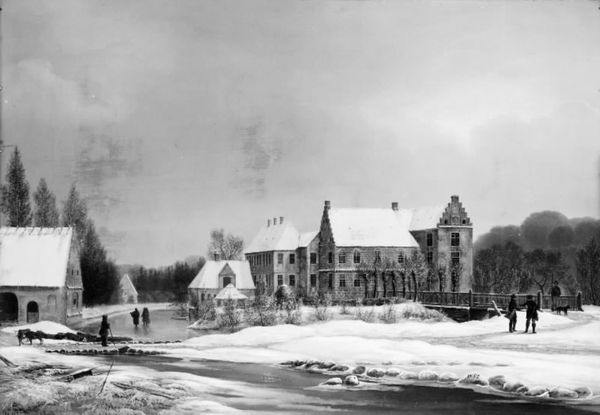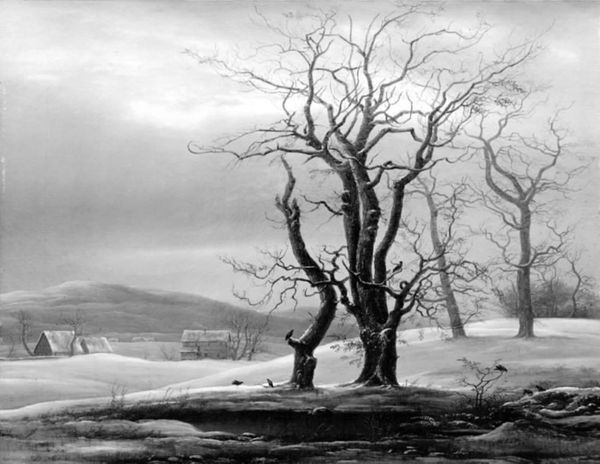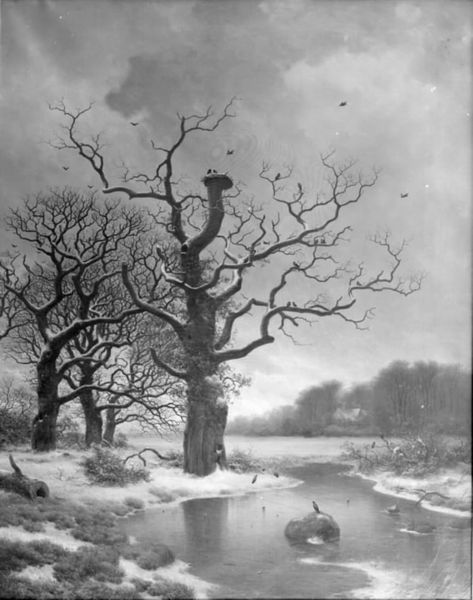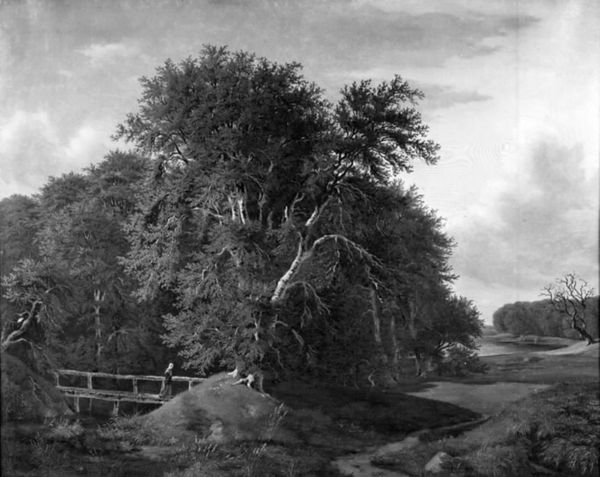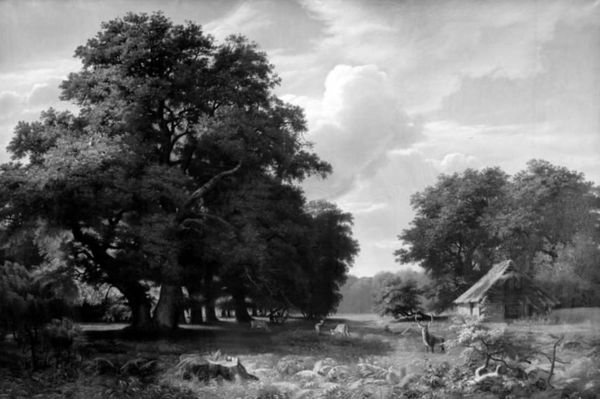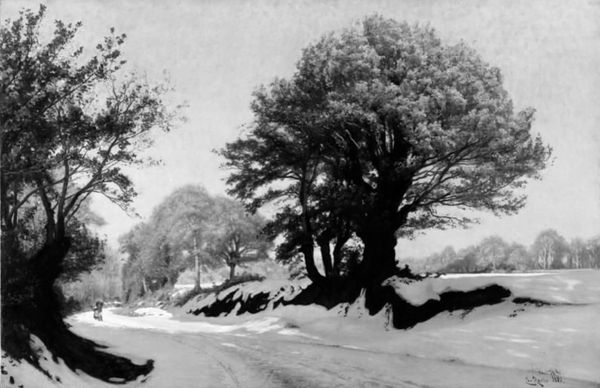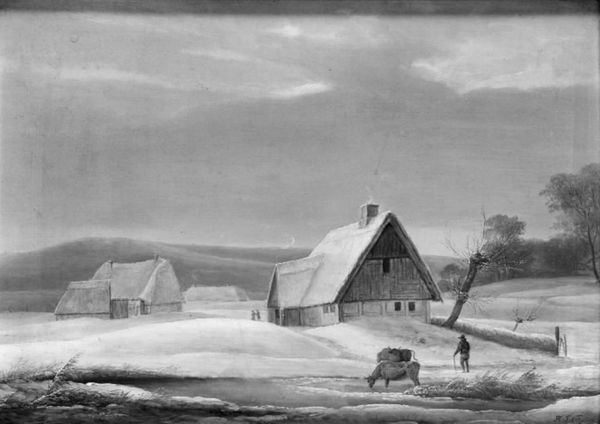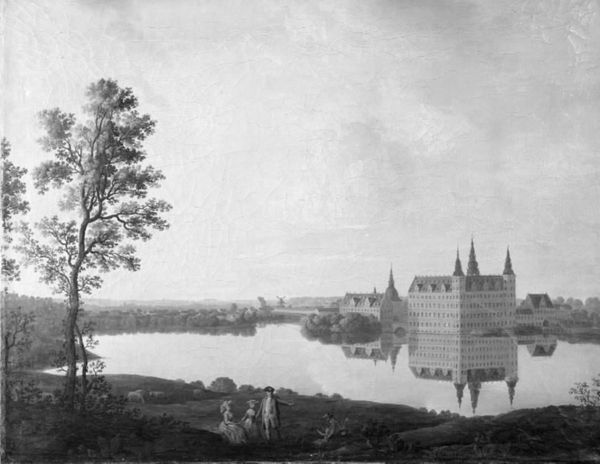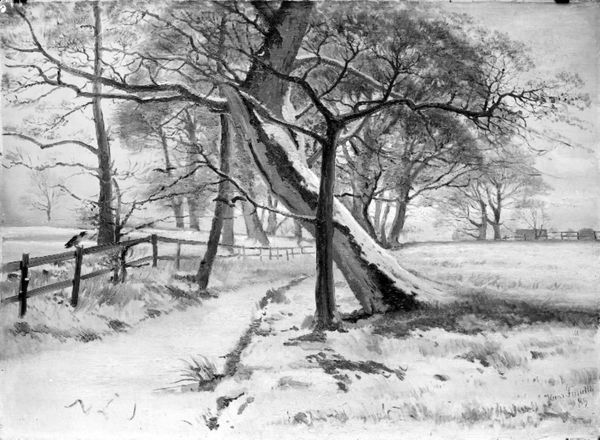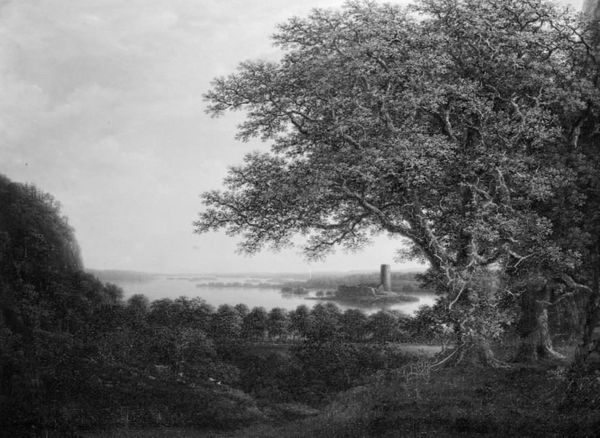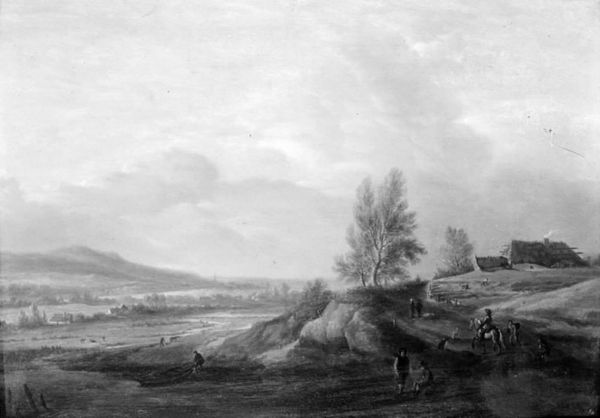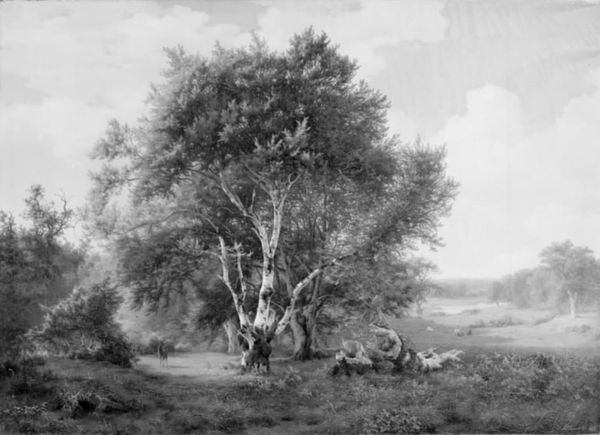
painting
#
painting
#
landscape
#
romanticism
#
monochrome
#
realism
#
monochrome
Dimensions: 79 cm (height) x 108 cm (width) (Netto)
Curator: Look at this captivating piece by F.M.E. Fabritius de Tengnagel titled "Winter Landscape with the Manor House Gisselfeld", painted in 1837. Editor: It evokes such a stark, almost dreamlike quality, doesn't it? The limited palette amplifies the chill and isolation of the scene. I immediately think about the societal roles manifested through the built environment and the implications that carries. Curator: Tengnagel paints a landscape dominated by Gisselfeld, a manor which, of course, symbolizes power and wealth. Winter transforms this power structure as it enforces hardship on the population that keeps such structures intact. Think of the laborers and tenants during such seasons. Editor: Yes, and what of the artist's process in constructing this image? Did he grapple with portraying these social inequalities directly, or was the aim to solely celebrate a wealthy landowner and his estate? And were the materials sourced locally, thus embedding the labor and geographic conditions within the work itself? Curator: Interesting points, especially given Tengnagel's potential access to high quality pigments versus what might be accessible to peasant artists during the time period. I feel he tries to connect the human element to the environment with those tiny figures skating on the ice or walking the grounds. We can delve into those people’s own lived experiences shaped by factors like class, gender, and access. How did the socioeconomic hierarchies of 19th-century rural Denmark impact their everyday lives? Editor: Those figures feel quite distant, almost aesthetic elements enhancing the grandeur. How might that impact our ability to see past such representation in examining the piece’s material reality and societal implications? And could the work actually reinforce those existing power structures through romantic idealization? Curator: I think engaging with these kinds of critiques encourages visitors to ask broader questions of their viewing experience. Editor: Absolutely. The piece really provides so much more than what meets the eye. I'm thankful for being able to closely think of it in materialist terms. Curator: Likewise, examining art through lenses of social, gendered, and political power gives rise to deeper understanding, as well as engaging dialogue.
Comments
No comments
Be the first to comment and join the conversation on the ultimate creative platform.
